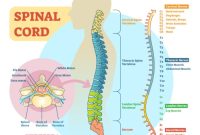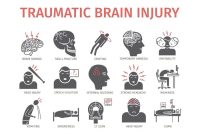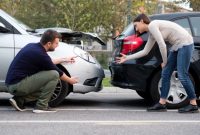In the aftermath of a motorcycle accident, the initial shock and adrenaline can make it difficult to think clearly. However, it is crucial to prioritize gathering evidence to protect your legal rights and ensure a fair outcome.
Evidence plays a pivotal role in establishing liability and determining the extent of damages. By collecting and preserving evidence effectively, you can strengthen your case and maximize your chances of obtaining compensation for your injuries and losses.
The Importance of Evidence in Motorcycle Accident Cases
Gathering evidence is crucial in motorcycle accident cases as it establishes liability and damages. Without sufficient evidence, proving fault and obtaining fair compensation can be challenging.
Types of Evidence Commonly Collected
Various types of evidence are collected in motorcycle accident cases:
- Witness Statements: Eyewitness accounts provide valuable information about the accident’s circumstances.
- Police Reports: Police officers document the accident scene, including details of the collision, vehicle damage, and injuries.
- Medical Records: These records provide a detailed account of the injuries sustained and the treatment received.
- Photographs: Images of the accident scene, vehicle damage, and injuries can help visualize the events.
- Surveillance Footage: Security cameras or traffic cameras may have captured footage of the accident.
- Expert Testimony: Experts such as accident reconstructionists and medical professionals can provide insights into the cause of the accident and the extent of injuries.
Preserving Evidence at the Scene
Securing evidence promptly after a motorcycle accident is critical to preserve its integrity and prevent its loss or alteration. Here are essential steps to safeguard evidence:
Documenting the Scene
*
-*Take photographs
Capture the accident scene from various angles, including the vehicles involved, road conditions, and any visible injuries.
-*Exchange information
Obtain contact details from other drivers, passengers, and potential witnesses. Note their names, addresses, phone numbers, and insurance information.
Preserving Physical Evidence
*
-*Secure vehicle parts
If possible, collect any broken or damaged vehicle parts that may provide insights into the accident.
-*Obtain medical records
Seek medical attention promptly and obtain copies of medical records documenting your injuries.
Timeliness is Crucial
Preserving evidence promptly is vital for several reasons:*
-*Prevents evidence loss
Evidence can be lost or altered over time due to factors like weather, traffic, or tampering.
-
-*Supports your claim
Timely evidence preservation strengthens your case by providing a factual record of the accident.
-*Ensures fairness
Preserving evidence ensures that all parties have access to the same information, promoting a fair and equitable legal process.
Identifying and Interviewing Witnesses
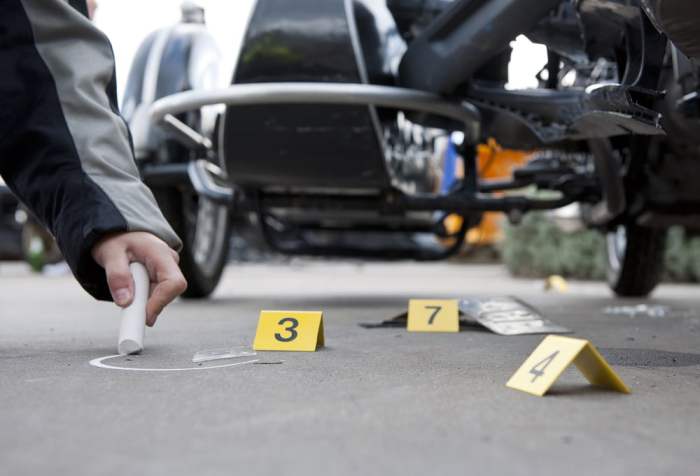
Witnesses play a crucial role in providing valuable information about a motorcycle accident.
They can corroborate or contradict the accounts of the involved parties and provide insights into the circumstances leading up to the crash.
Identifying and locating potential witnesses can be challenging, but it’s essential to gather as many statements as possible. Bystanders, other drivers, and passengers may have witnessed the accident and can provide crucial details.
Interviewing Techniques
When interviewing witnesses, it’s important to:
- Approach them politely and introduce yourself.
- Explain the purpose of the interview and obtain their consent.
- Ask open-ended questions to elicit detailed responses.
- Avoid leading questions that could influence their answers.
- Take notes or record the interview with their permission.
- Thank the witness for their time and cooperation.
Using Physical Evidence
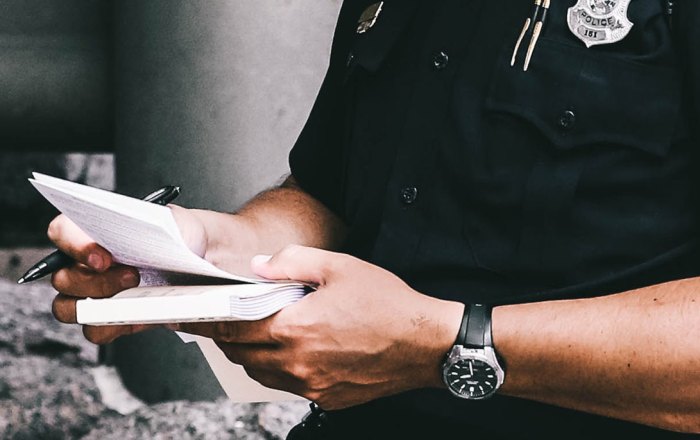
Physical evidence plays a crucial role in reconstructing motorcycle accidents and determining fault. Motorcycle parts, skid marks, and debris provide valuable insights into the sequence of events leading to the collision.
Preserving and Documenting Physical Evidence
Preserving physical evidence is essential to ensure its integrity and prevent tampering. Immediately following the accident, take photographs of the scene from various angles. If possible, create a diagram of the accident site, noting the positions of vehicles, debris, and any other relevant landmarks.
Role of Experts
Accident reconstructionists are experts who analyze physical evidence to determine the cause of an accident. They use specialized techniques to examine motorcycle parts, skid marks, and debris to reconstruct the sequence of events and determine factors such as speed, impact angles, and driver behavior.
Their findings can be crucial in establishing liability and determining fault.
Final Thoughts
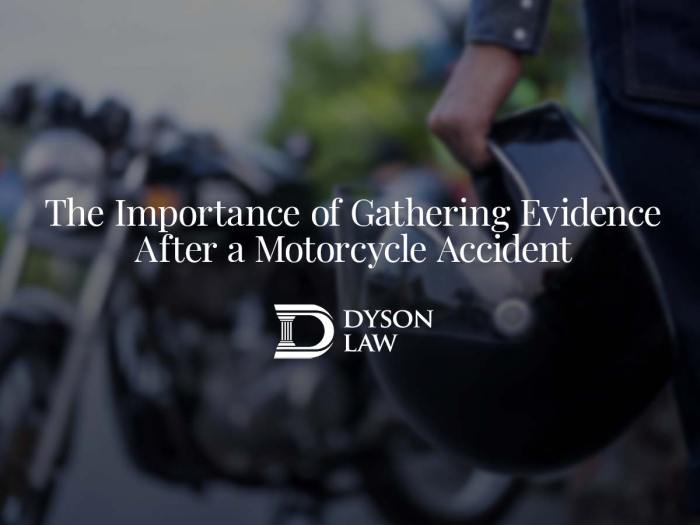
Gathering evidence after a motorcycle accident is not just about fulfilling a legal requirement; it is about protecting your interests and ensuring justice prevails. By following the steps Artikeld above, you can empower yourself with the necessary documentation to support your claim and hold the responsible parties accountable.
Common Queries
Why is it important to exchange information with other parties at the accident scene?
Exchanging information, such as names, contact details, and insurance details, allows you to stay in touch with the other parties involved and ensures you have their information for insurance purposes and potential legal proceedings.
What types of medical records should I obtain after a motorcycle accident?
Medical records provide vital documentation of your injuries and treatment. Obtain all medical records related to the accident, including emergency room reports, doctor’s notes, hospital bills, and rehabilitation records.
How can I preserve physical evidence at the accident scene?
Take photographs of the accident scene, including the vehicles involved, skid marks, debris, and any visible injuries. Create a diagram or sketch of the accident scene to illustrate the positions of the vehicles and other relevant details.

